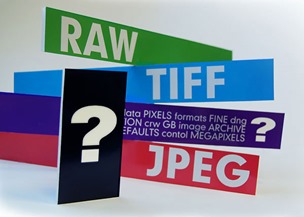 If you edit your photos and save them in default image format then stop saving your photos in default low resolution image format and let your images rich in details by knowing which image format is best for a particular image type.
If you edit your photos and save them in default image format then stop saving your photos in default low resolution image format and let your images rich in details by knowing which image format is best for a particular image type.
However most of the time you don’t have to consider image format but, if you want to enhance and make your images more colour-rich and detailed by retaining their original state then you have to select the right image format while editing and saving your images.
Different digital devices like digital cameras, smartphones and other photo capturing gadgets use different settings and different file formats to save captured photos, but they are set to save images in best quality. That’s up to the capturing devices but, what if you want to edit photos later and then save it? If you ignore the format type then your image may loose its significance and ruined your hard work on editing the photo. So you have to understand the right image format meant for right picture.
Most commonly used image formats are JPEG/JPG, PNG, GIF, BMP, TIFF, WMF, EMF, RAW and PSD graphic file formats. To know which would you choose next time to save photos, you must understand what these formats meant for.
Here are the most common image file formats you ever encounters in digital photos.
JPEG/JPG (Joint Photographic Experts Group)
Lossy file format, small size
Widely used and best suitable image file format. It is the most commonly used digital image format and all digital capturing devices like digital cameras and smartphones have options to save photo in this format. JPEG is a lossy format because every time edit and save JPEG image file it losses its quality so, you must choose PNG format if image is still in editing and save final image in JPEG/JPG.
JPEG has 8 bits of each red, green and blue colors and produces a total of 24 bits. If you like to have a small image file with excellent colors then JPEG/JPG is the best choice. It is the best format if you want to use the image on web because of its excellent image quality regardless of compression and small size.
PNG (Portable Network Graphics)
Colorful, optional transparency image file format
PNG file format mostly used for transparency in images, color-rich images and sustain the quality of photos well after being edited. Transparency is the optional feature of PNG file format. It is best for color-rich images because it supports true colors (16 million colors) to produce images.
You can save the images in PNG file if they are still under editing because of its lossless feature unlike lossy JPEG file and may use JPEG for final image which is small in size compared to PNG. It is the best image format for uncompressed uniform color images and produce lossless images.
GIF (Graphic Interchange Format)
Animated and limited colors file format
GIFF is a limited colors graphics format suitable for images having less colors and for making animations. It supports 8-bit palette or 256 colors graphics in images. GIF format is good for storing images having single color in large area of image and diagrams, shapes and cartoon effects. GIF is not suitable for photographic images.
TIFF (Tagged Image File Format)
Usable in printing
TIFF is an uncompressed large size image file format commonly used for printing purposes. TIFF can store in 8 or 16 bits of each red, green and blue colors total of 24 bits or 48 bits respectively. However this image format is not suited for web browsers but well suited for photography needs and in printing industries.
BMP (Bitmap Image File)
Best quality, large file size format
BMP is best format for quality images and relatively produce large size images. Its an uncompressed image file format produces the best quality images.
PSD (Photoshop’s Native Format)
Photoshop file
However PSD is the native format of Photoshop but it store images and effect you made on photos in Photoshop. It preserve the Photoshop effect, layers, masks, shapes and different modes used in editing the photo which you can get later on any time if you want to enhance you photo further more.
Recommended: 10 Best Free Photo Editing Software Programs
These are some commonly used image file formats used for different images for different purposes.
Let us know which image format you prefer the most and why, by just leaving a comment.
Image: NYIP



Comments